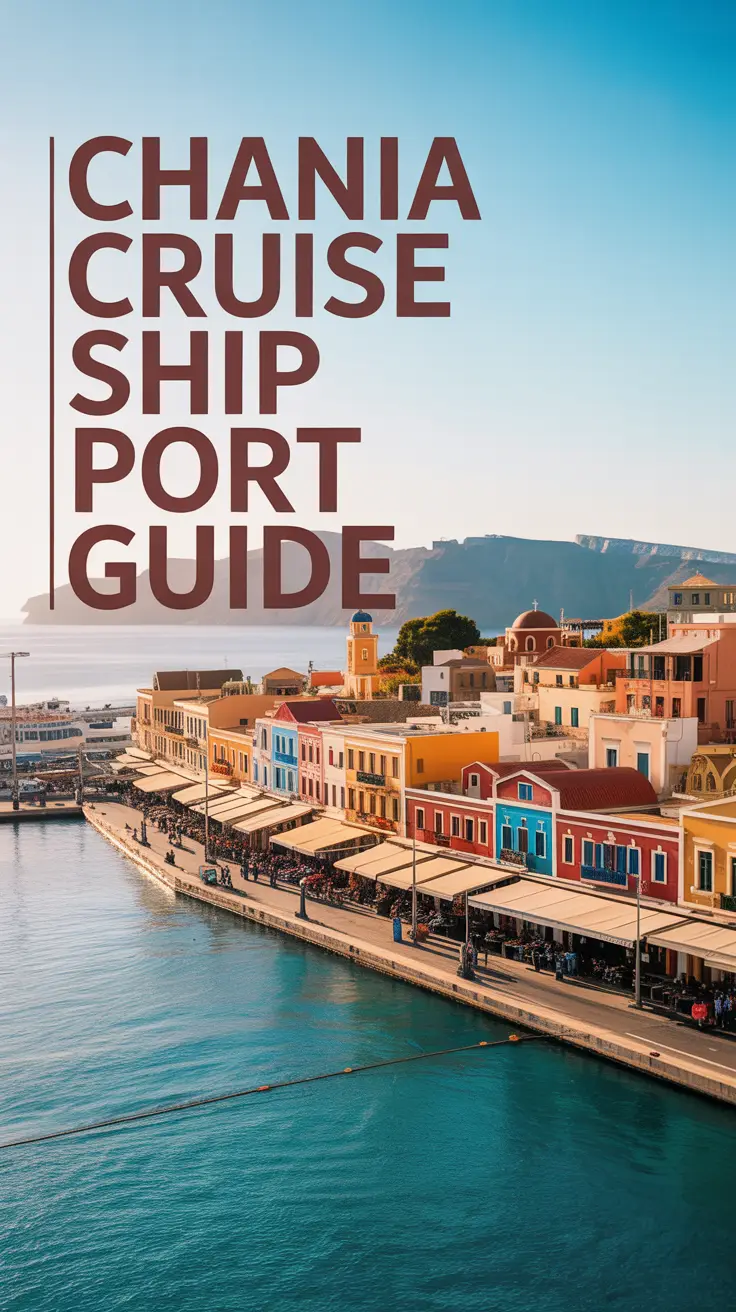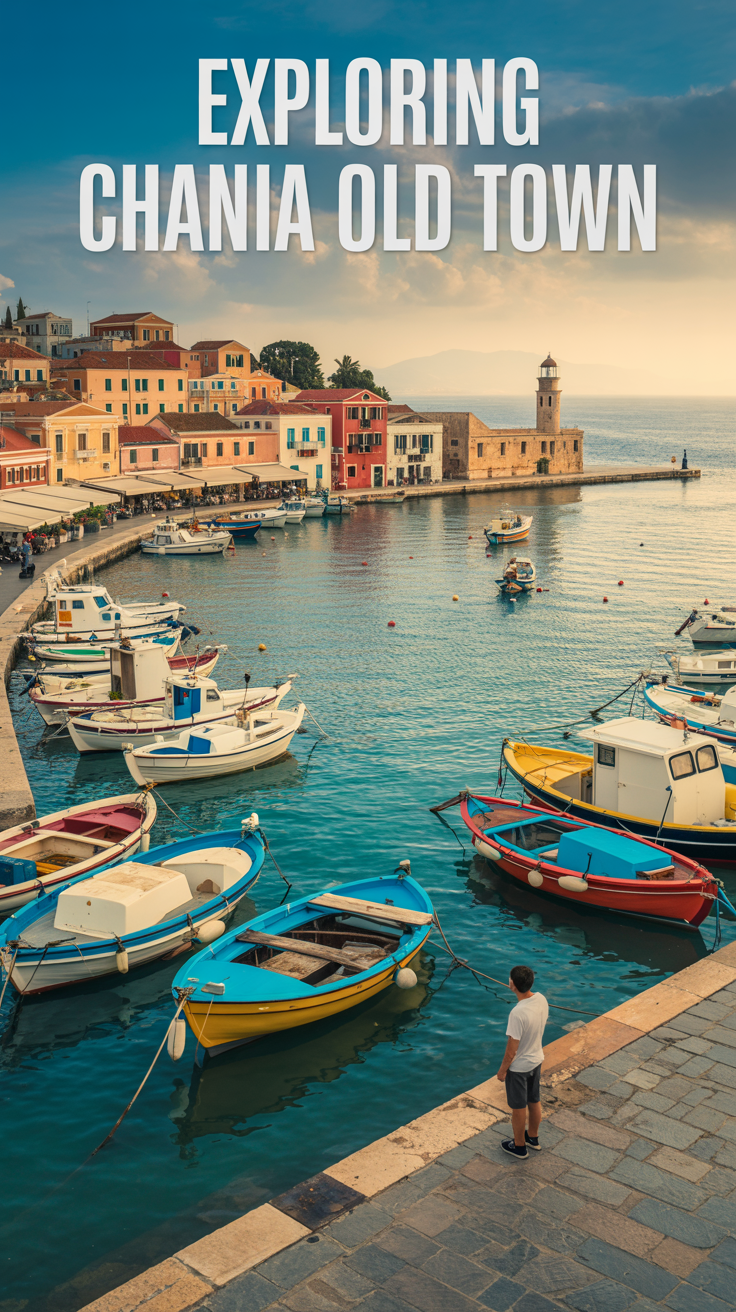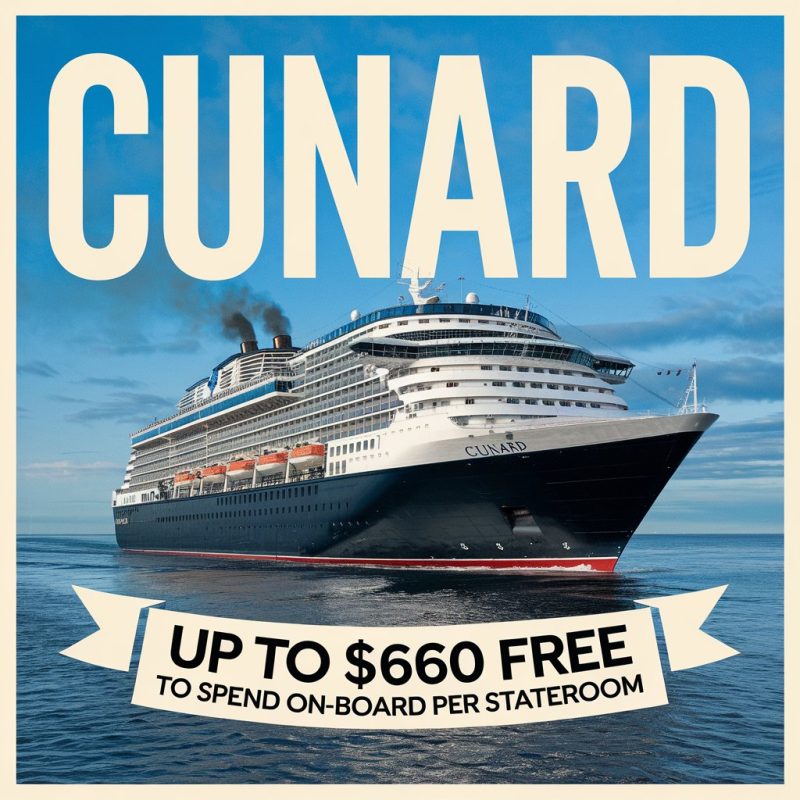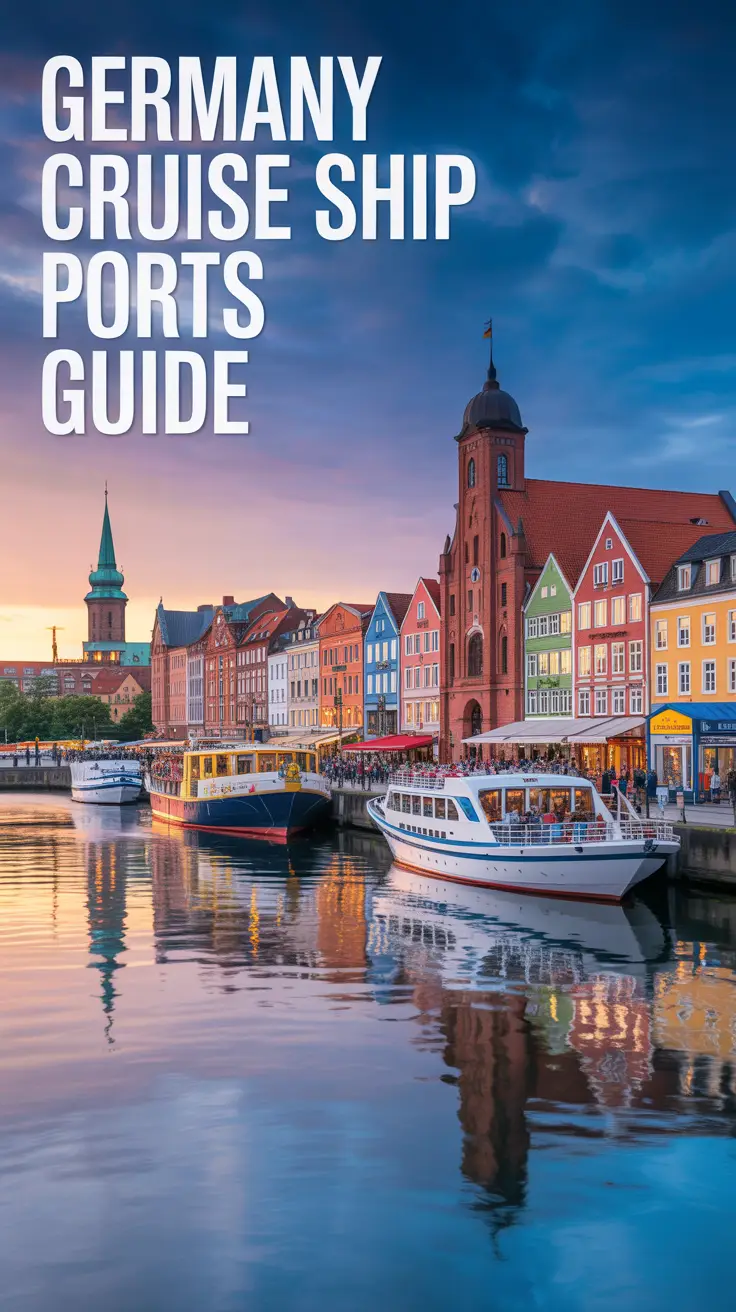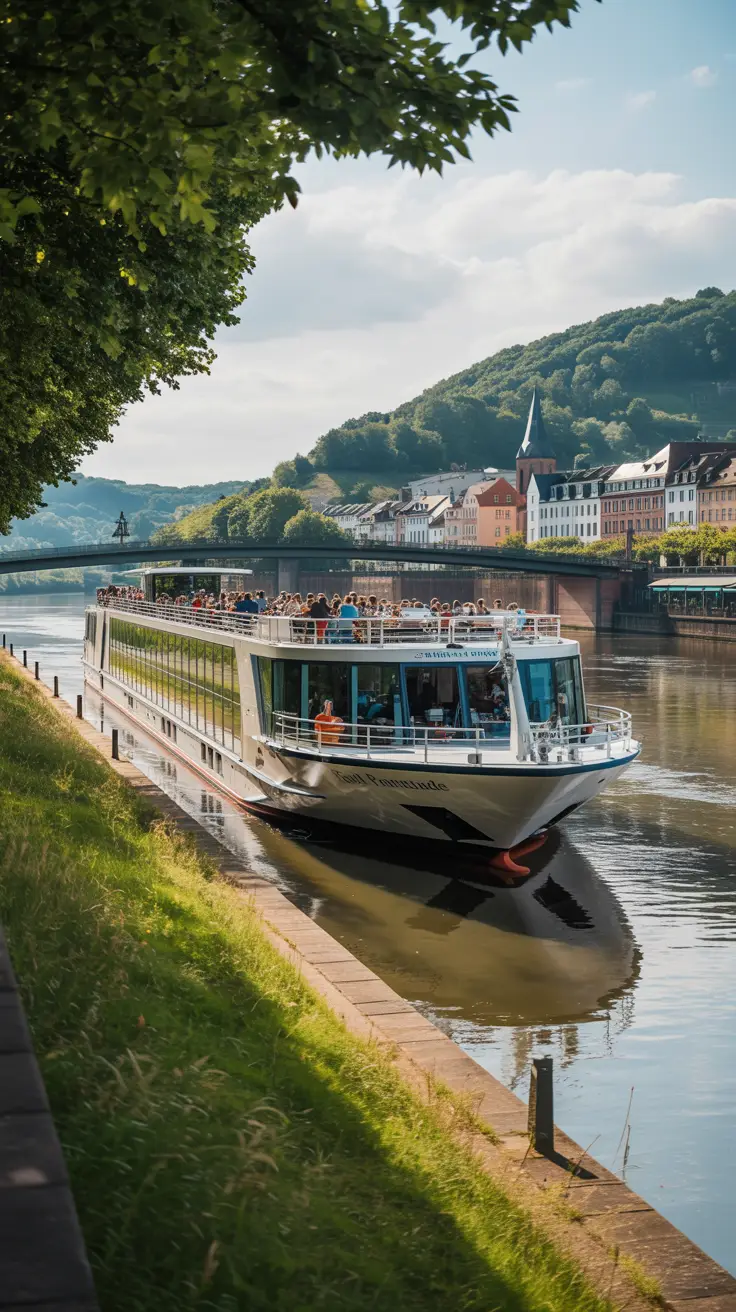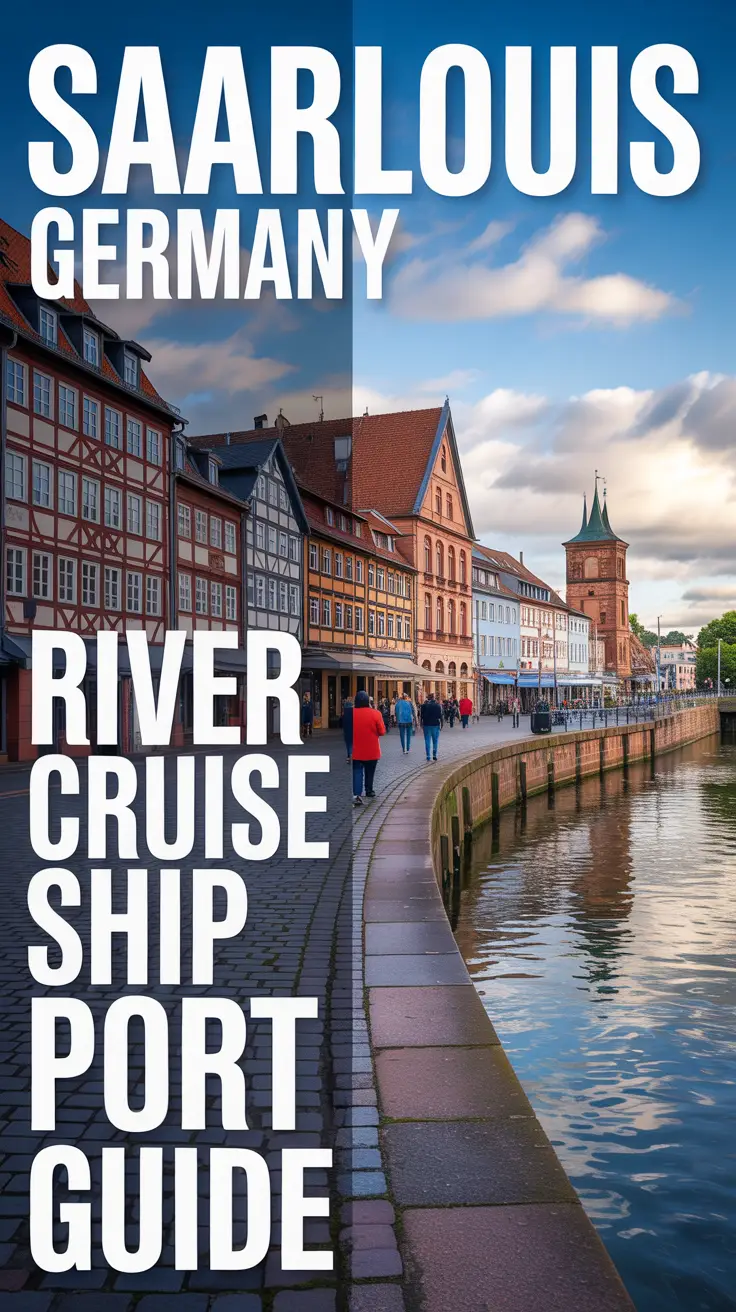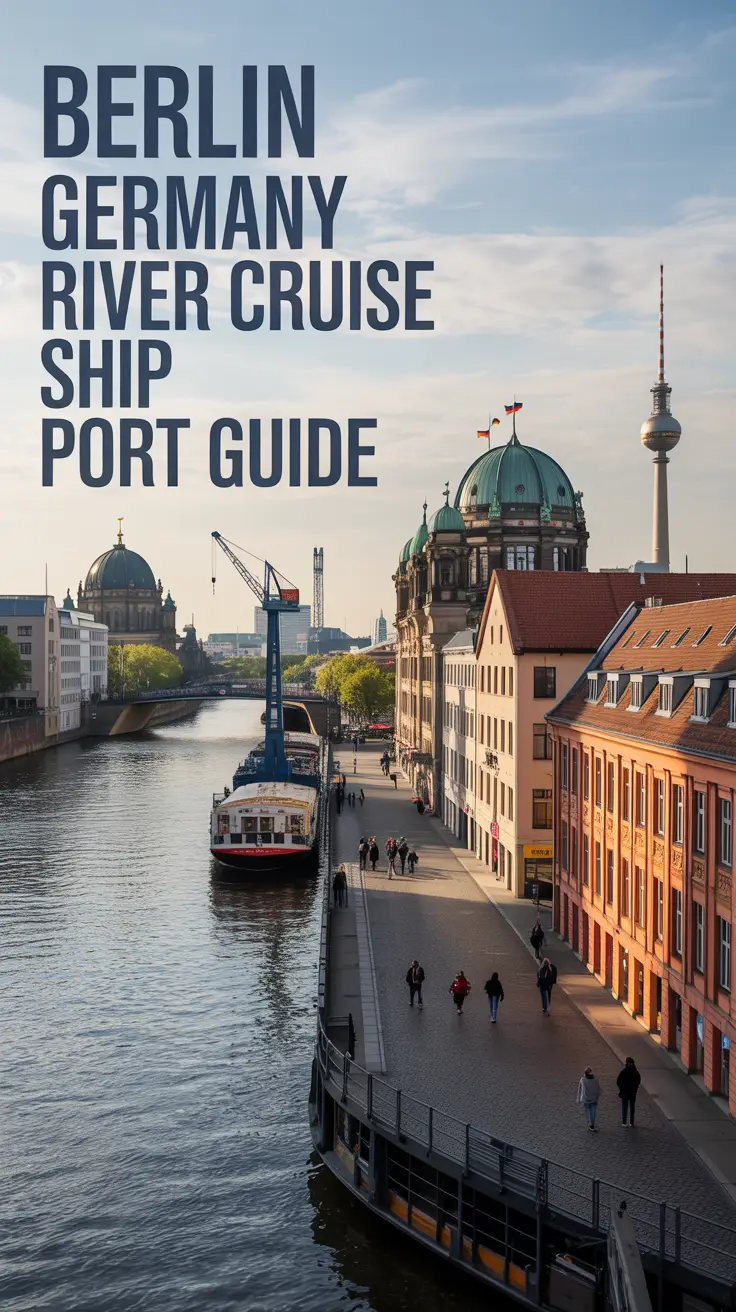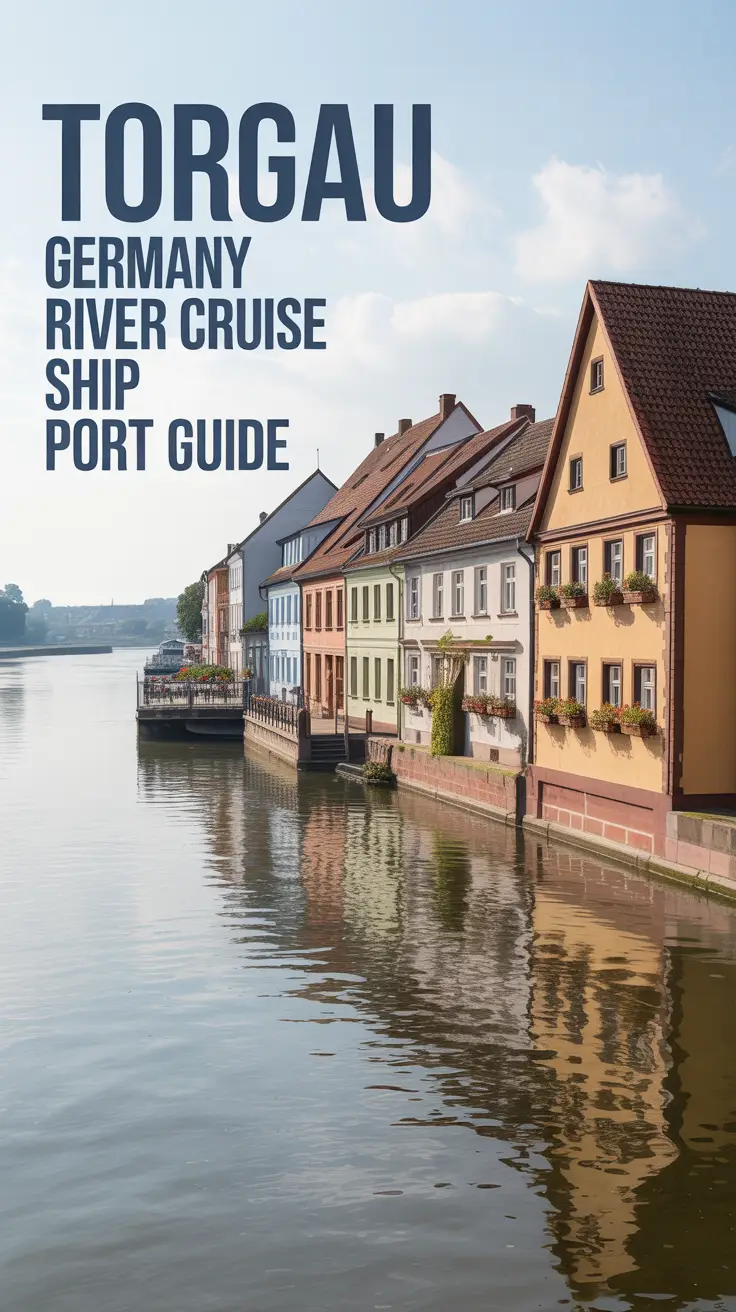Chania, Crete’s cruise port is located in Souda Bay, approximately 7km from Chania’s Old Town. The modern terminal offers basic facilities, with shuttle buses and taxis available for transfer. The Venetian harbor, Maritime Museum, and historic old quarter are main attractions. Shore excursions include Samaria Gorge, Akrotiri Peninsula, and traditional Cretan villages.
| Quick Facts | Details |
|---|---|
| Port Location | Souda Bay (7km from Chania Old Town) |
| Distance to Town Center | 15-20 minutes by taxi/shuttle |
| Tender or Dock | Dock (one of Greece’s largest natural harbors) |
| Port Facilities | Basic terminal with restrooms, small café, ATM |
| Taxi Cost to Old Town | €15-20 (can be shared) |
| Shuttle Bus | Usually offered by cruise lines (€8-15 return) |
| Walkable from Port | No – too far to walk comfortably |
| Best Beach Near Town | Nea Chora (5-minute walk from Old Town) |
| Currency | Euro |
| Language | Greek (English widely spoken in tourist areas) |
We pulled into Chania port early in the morning, and I have to say, the approach alone was worth waking up for. The old Venetian harbor with its lighthouse comes into view, and you immediately know you’re somewhere special. Our ship docked at Souda Bay, which is about a 15-minute drive from the old town. The cruise line offered a shuttle, but we ended up sharing a taxi with another couple we met at breakfast – much faster and honestly pretty cheap when split four ways.
Once we got into Chania itself, we ditched any organized tour plans and just wandered. The narrow streets of the old town are exactly what you hope for in Crete – colorful buildings, little shops selling olive oil and leather goods, and tavernas on every corner. We grabbed lunch at a place right on the waterfront where the waiter convinced us to try the dakos, which is basically a Cretan bruschetta situation, and it was incredible. The whole area is super walkable, and we managed to see the Maritime Museum, poke around the covered market, and still have time for a swim at Nea Chora beach before heading back to the ship. Just make sure you keep an eye on the time – that shuttle schedule is no joke!
Understanding Souda Bay Port
Here’s what cruise lines don’t always make clear: Souda Bay is actually a NATO naval base that also serves as Crete’s main commercial and cruise port. This means you’ll see military vessels alongside cruise ships, which gives the port a more industrial feel than some of the prettier Greek island ports. Don’t let that put you off though – the port itself is incredibly well-organized and secure.
The terminal building at Souda is functional rather than fancy. You’ll find:
- Basic restroom facilities (use them before leaving as public toilets in the old town can be hit or miss)
- A small café serving overpriced coffee and snacks
- One ATM (though it sometimes runs out of cash on busy cruise days)
- A few souvenir stands selling the usual suspects
- Free WiFi that’s patchy at best
👉 👉 Book shore excursions in Chania direct and save
Getting From Souda Bay to Chania Old Town
You’ve got three main options for making the journey, and each has its pros and cons.
Cruise Line Shuttle Buses
Most cruise lines offer a shuttle service that runs continuously throughout your port day. The cost typically ranges from €8 to €15 for a return ticket. These buses drop you at the harbor area near the old town, which is exactly where you want to be. The downside? You’re on their schedule, and depending on how many passengers are using the service, you might wait 20-30 minutes for a bus.
Pro tip: Get the shuttle into town early, then take a taxi back. This gives you flexibility at the end of your day without worrying about missing the last shuttle.
Taxis
Taxis wait right outside the port gates, and drivers know the drill with cruise passengers. The metered fare to Chania Old Town should be around €15-20, but here’s the insider move: share with other passengers. Most taxis can take four people comfortably, so that €20 fare becomes €5 per person. Just ask around at the port gate – you’ll find plenty of people heading the same direction.
Taxis back to the port are easy to find at the taxi rank near the market hall or you can ask any taverna to call one for you.
Public Bus
Yes, there’s a local bus that connects Souda to Chania, but honestly? Skip it unless you’re really on a budget or love public transport adventures. The bus stop is about a 15-minute walk from the cruise terminal (not clearly signposted), services can be infrequent, and you’ll save maybe €10 compared to sharing a taxi. Life’s too short when you’re only in port for eight hours.
Exploring Chania Old Town
Chania’s Venetian Old Town is genuinely one of the most beautiful in the Mediterranean, and I’m not just saying that. The Venetians controlled Crete for over four centuries, and their architectural legacy is everywhere you look. Later Ottoman influences add another layer of character, creating this fascinating blend of cultures.
The Venetian Harbor
This is the postcard view everyone wants, and it doesn’t disappoint. The harbor is shaped like a horseshoe and lined with tavernas, cafés, and converted warehouses that now house restaurants and bars. At the entrance stands the iconic lighthouse (officially called the Egyptian Lighthouse because it was rebuilt during the Egyptian occupation in the 1830s).
You can walk along the harbor wall to the lighthouse – it takes about 10 minutes and gives you great views back toward the town. The lighthouse itself isn’t open to climb, but the walk is worth it just for photos without the crowds.
The Old Town Neighborhoods
The old town is divided into distinct quarters, each with its own character:
- Kastelli: The oldest part, perched on a hill with narrow alleys and fewer tourists. This was the ancient and Venetian administrative center.
- Topanas: The Turkish quarter with some remaining minarets (now converted to bell towers) and the best preserved Ottoman architecture.
- Evraiki: The former Jewish quarter, quieter with more residential feel.
- Splantzia: The liveliest neighborhood with the best tavernas where locals actually eat. Look for restaurants around Splantzia Square.
My advice? Don’t try to “see” these neighborhoods systematically. Just wander. Get deliberately lost. The old town is compact enough that you can’t really get lost-lost, and the best discoveries come from turning down random alleyways.
Want to know more about Mediterranean cruise ports in Greece?
Must-See Attractions (If You Must)
Maritime Museum of Crete
Located at the entrance to the Firkas Fortress, this museum covers Crete’s naval history from ancient times through World War II. It’s well-curated but quite specific in its interest. If you’re not a maritime history buff, a quick walk through takes 30-45 minutes. Entry is around €3. The fortress itself offers excellent harbor views and is free to walk around.
Municipal Market (Agora)
This is a must-visit even if you’re not buying anything. The cross-shaped market building dates from 1913 and is modeled on the market in Marseille. Inside you’ll find vendors selling local products: herbs, honey, cheese, olive oil, spices, and fresh produce. It’s a feast for the senses and one of the few places you can buy authentic local products at reasonable prices. Open mornings until early afternoon.
Archaeological Museum
Housed in a former Venetian monastery, the museum showcases artifacts from western Crete spanning from Neolithic to Roman periods. It’s small and manageable – you can see everything in under an hour. Entry is around €4. Skip it if you’ve already visited or plan to visit the Heraklion archaeological museum, which is far more extensive.
Best Beaches Near Chania
One of Chania’s big advantages over some other cruise ports is the proximity of good beaches to the old town. You can actually swim and sightsee in the same day without rushing.
Nea Chora Beach
This is your best bet if you’re based in the old town. It’s literally a 5-minute walk west from the Venetian harbor. The beach has coarse sand and pebbles, clear water, and it’s well-organized with sunbeds and umbrellas for rent (around €8 for the set). The shallow water makes it family-friendly.
The beachfront is lined with tavernas where you can grab lunch with your toes practically in the sand. It gets busy with locals on weekends but during cruise ship days midweek, it’s manageable. The water quality is good despite being close to town.
Agioi Apostoloi
About 4km west of Chania (€10-12 taxi or local bus), this area has several small sandy coves separated by rocky outcrops. The beaches are organized with facilities, and the water is crystal clear. If you want a proper beach day rather than a quick dip, this is worth the short journey.
Marathi Beach
On the Akrotiri Peninsula about 15km from Chania, Marathi is a small fishing village with a lovely sandy beach. It’s too far for a quick visit unless you’ve rented a car or booked a taxi for the day, but if you’re beach-focused and want to escape the crowds, it’s worth considering. The village has excellent fish tavernas right on the beach.
👉 👉 Book shore excursions in Chania direct and save
Where to Eat in Chania
Here’s the thing about eating in Chania: the most touristy-looking places along the main harbor can actually be pretty decent because the competition is fierce. But you’ll eat better and cheaper if you venture just one or two streets back from the waterfront.
Taverna Recommendations
For Authentic Cretan Food
Look for tavernas in Splantzia Square or the streets around it. You want places with handwritten menus (or no menu at all), where the waiter tells you what’s cooking today. This is how traditional Cretan tavernas work – they cook whatever’s fresh and local that morning.
Must-try Cretan dishes:
- Dakos: Barley rusk topped with tomatoes, feta, and olive oil (the Cretan bruschetta I mentioned earlier)
- Kalitsounia: Small cheese pies, either savory or sweet
- Antikristo: Lamb cooked slowly around an open fire (not everywhere has this, but if you see it, order it)
- Apaki: Smoked pork, a Cretan specialty
- Boureki: A baked dish with zucchini, potatoes, and mizithra cheese
- Fresh grilled fish: Usually sold by weight, ask the price before ordering
Lunch Strategy
If you’re eating lunch on the harbor, embrace it. Yes, it’s touristy. Yes, you’ll pay a bit more. But having a leisurely meal with that view is part of the Chania experience. Just avoid places with picture menus and touts trying to drag you in.
A good value lunch is the “fixed price menu” or “menu of the day” that many tavernas offer – usually around €12-15 for a main course, side, and drink. Always ask if the bread and appetizers that appear are free or will be charged – this varies between restaurants.
Quick Bites and Snacks
For quick cheap eats, look for:
- Bougatsa: Flaky pastry filled with cheese or custard, sold at specialist shops (often called bougatsa shops, unsurprisingly)
- Gyros or souvlaki: The places full of locals at lunchtime are your best bet
- Spanakopita: Spinach pie from bakeries
Shore Excursions from Chania
If you prefer organized activities or want to see more of western Crete beyond Chania town, here are the most popular options. Just be realistic about timing – you’ll typically have 7-8 hours in port, and excursions need to get you back with buffer time.
Samaria Gorge
This is Europe’s longest gorge and one of Crete’s most famous natural attractions. The full hike is 16km and takes 5-7 hours, so you cannot do this as an independent trip on a cruise stop. Some cruise lines offer a “taste of Samaria” tour where you visit the entrance, walk a short section, and return – which honestly feels a bit pointless.
If you’re a keen hiker and Samaria is a bucket list item, you’d be better off visiting Crete on a longer stay rather than trying to tick this box on a cruise day.
Akrotiri Peninsula and Monasteries
A more manageable half-day tour visits the Akrotiri Peninsula northeast of Chania. Highlights include:
- Agia Triada Monastery (Holy Trinity) – a beautiful 17th-century monastery with impressive architecture and nice gardens
- Gouverneto Monastery – older and more austere, with a cave chapel nearby
- Views over Souda Bay
This gives you a taste of rural Crete and religious heritage without eating up your entire port day. You can book this through your cruise line or find local tour operators offering it cheaper.
Traditional Villages Tour
Tours typically visit mountain villages like Meskla, Theriso, or villages in the Apokoronas region. You’ll see traditional architecture, olive groves, and usually stop at a family-run taverna for a meal. These tours are pleasant but can feel a bit manufactured. If you’ve been to similar villages on other Greek islands, you’re not missing much by skipping this.
Balos Lagoon
Balos is arguably the most photographed beach in Crete – a stunning lagoon with turquoise waters on the western tip of the island. Here’s the problem: it’s about 55km from Chania down increasingly rough roads, or you take a boat from Kissamos (30km from Chania). Either way, it’s difficult to visit on a cruise stop unless your ship has a very long stay or you book a specific excursion.
Cruise line excursions to Balos typically include a boat trip which sounds romantic but often involves considerable waiting around and crowds. If you desperately want to see it, go for it, but manage your expectations about how much time you’ll actually spend there.
Wine Tasting
Cretan wines are having a renaissance, and several wineries near Chania offer tastings. The most accessible is Manousakis Winery, about 10km from town. You’ll need to book ahead and arrange your own transport (taxi or rental car), but it’s a lovely alternative to sightseeing if you’re a wine enthusiast.
Shopping in Chania
Chania is genuinely one of the better Greek ports for shopping, with a good mix of tourist tat and quality local products.
What’s Worth Buying
Olive Oil: Crete produces some of Greece’s finest olive oil. Buy from the municipal market or specialist shops rather than tourist shops near the harbor. Look for PDO (Protected Designation of Origin) status labels. Good oil will cost €8-15 per liter.
Honey: Cretan thyme honey is exceptional. Again, buy from the market or specialist shops. Prices vary wildly – market stalls are your best value.
Herbs and Spices: The market has excellent selections of dried oregano, mountain tea (sideritis), dittany (a rare Cretan herb), and other herbs at good prices.
Leather Goods: Chania has several leather workshops producing bags, sandals, and belts. Quality varies enormously. Check stitching and ask if it’s “genuine leather from Crete” (though honestly much is imported). Custom sandals can be made quickly while you wait at several shops.
Ceramics: Decorative bowls, plates, and traditional Cretan patterns. Check carefully for chips and cracks before buying.
Worry Beads (Komboloi): If you want an authentic set, look for ones made from amber, semi-precious stones, or wood rather than plastic. Expect to pay €20-50 for quality pieces.
What to Avoid
Skip the mass-produced “Greek” souvenirs that are actually made in China – you know the ones. Also be wary of “antiques” (they’re not) and “rare” Byzantine icons (definitely not). If you want an icon, buy a modern reproduction from a church or monastery where the money supports the religious community.
Explore more of the top Greek islands on your Mediterranean adventure.
Practical Tips for Your Chania Port Day
Money Matters
Most places in the old town accept cards, but always carry some cash for:
- Taxis (some don’t accept cards)
- Small purchases at the market
- Beach sunbed rentals
- Public toilets (50 cents)
- Tips at tavernas (it’s customary to leave a few euros, even if service is included)
ATMs are plentiful in the old town but the one at the port is often empty by afternoon when ships are in. Withdraw cash in town if needed.
Dress Code and Comfort
The old town has cobblestone streets and uneven surfaces everywhere. Wear comfortable walking shoes – save the flip-flops for the beach. If you’re visiting monasteries on a tour, you’ll need covered shoulders and knees (sometimes they provide wraps but don’t count on it).
Bring sun protection. Crete’s sun is fierce, especially in summer months. Hat, sunglasses, and high-SPF sunscreen are essential. Many streets in the old town are too narrow for shade during midday.
Language
English is widely spoken in tourist areas, shops, and restaurants. Learning a few Greek phrases is appreciated:
- Kalimera (good morning) – ka-lee-MEH-rah
- Efharisto (thank you) – ef-ha-ree-STOH
- Parakalo (please/you’re welcome) – pa-ra-ka-LOH
- Ti kaneis? (how are you?) – tee KA-nees
Locals genuinely appreciate when visitors make an effort, even if your pronunciation is terrible.
WiFi and Connectivity
Most tavernas and cafés offer free WiFi if you’re a customer. The password is usually displayed or you can ask. Some areas of the old town have public WiFi but it’s unreliable. If you need solid internet, duck into a café.
Make sure you download offline maps before leaving the ship. Google Maps works well offline for navigation around Chania once you’ve downloaded the area.
Safety and Scams
Chania is very safe for tourists. The most common “scam” is restaurants adding items to your bill that you didn’t order. Always check your bill before paying, and question anything unclear. This isn’t usually malicious – sometimes it’s just confused orders – but it happens.
Watch your belongings in crowded areas (the market, busy harbor restaurants) as opportunistic pickpockets do operate, though it’s less common than in larger cities.
Timing Your Day
Here’s a realistic timeline for a typical cruise day in Chania:
| Time | Activity |
|---|---|
| 08:00 | Ship docks at Souda Bay |
| 08:30 | Clear immigration and customs |
| 09:00 | Take shuttle or taxi to Old Town (arrive 09:15-09:30) |
| 09:30-12:00 | Explore Old Town, visit market, museums, shop |
| 12:00-13:30 | Lunch at taverna |
| 13:30-15:30 | Beach time at Nea Chora or continue exploring |
| 15:30-16:30 | Last-minute shopping, coffee, ice cream |
| 16:30 | Head back toward port |
| 17:00 | Arrive at ship (assuming 17:30 all aboard) |
This assumes a typical 8-hour port call. Adjust based on your ship’s actual schedule. The golden rule: be back at the ship 30 minutes before all-aboard time at minimum. That shuttle you’re counting on? It might be full. That taxi? Might take 10 minutes to find. Build in buffer time.
👉 👉 Book shore excursions in Chania direct and save
Alternatives to the Usual Tourist Trail
If you’ve been to Chania before or want something different from the standard harbor-wander-lunch-beach routine, consider these options.
Rent a Car
Several car rental agencies operate near the port and in Chania town. With a rental car and your port day, you could visit Elafonisi Beach (one of Crete’s most beautiful, though it’s a 1.5-hour drive each way), explore mountain villages independently, or drive to the Botanical Gardens. Just make sure you’re comfortable with Greek driving (which can be spirited) and mountain roads (which are winding).
Book ahead online for better rates and to ensure availability. Expect to pay €40-60 for a small car for the day.
Take a Cooking Class
Several operators in Chania offer half-day cooking classes where you learn to make traditional Cretan dishes. These typically include a market visit to buy ingredients, the cooking session, and eating what you’ve made. It’s hands-on, cultural, and you leave with recipes. Book well in advance as spaces are limited.
Kayak Tour
Kayaking tours along the coastline west of Chania visit sea caves and remote coves you can’t access by land. These typically run 3-4 hours including instruction, so they fit well into a port day. You need moderate fitness but no experience.
Bike Tour
Cycling tours explore the old town and waterfront areas, covering more ground than walking with frequent stops for history and tastings. E-bikes are available if you’re worried about hills or heat.
The Challenges (Because It’s Not All Perfect)
Let’s be honest about some potential frustrations:
The Port Location: Souda Bay is not charming. You’re docking at a commercial/military port with no atmosphere. Unlike some Greek islands where the port itself is part of the experience (thinking of Santorini or Mykonos), Souda is purely functional.
Transport Dependency: You cannot walk to Chania from the port. You’re dependent on shuttles or taxis, which costs money and time. Factor this into your planning.
Summer Crowds: Chania is hugely popular with tourists beyond cruise passengers. In peak summer, the old town can feel genuinely crowded, especially midday. The harbor restaurants are packed, beach sunbeds fill up, and the narrow streets are shoulder-to-shoulder in places.
Limited Time for Excursions: The port’s location means many of Crete’s famous sites (Samaria Gorge, Elafonisi, Balos, even Knossos Palace near Heraklion) are difficult or impossible to visit properly on a typical port day. If these are priorities, consider a longer stay in Crete rather than seeing it on a cruise stop.
Restaurant Quality Variance: Not all waterfront tavernas are created equal. Some serve excellent food, others are mediocre and overpriced. There’s not always an obvious way to tell from the outside. Reading recent reviews or asking locals helps but isn’t foolproof.
Insider Tips You Won’t Find in the Cruise Brochure
Photography timing: The best light for photographing the Venetian harbor and lighthouse is late afternoon/early evening. Morning light is harsh and creates unflattering shadows. If photography is a priority, structure your day to be at the harbor for the golden hour before you head back to the ship.
Turkish bath: Chania has a restored hammam (Turkish bath) from the Ottoman period. It’s small and often closed for renovations, but if it’s open, a traditional bath experience is a unique cultural activity you won’t find at every port.
Covered market timing: The municipal market is at its best and busiest in the morning (9-11am). By afternoon, vendors are packing up and the energy dies. Plan to visit before lunch if you want the full experience.
Beach sunbed politics: At Nea Chora and other organized beaches, you’re technically supposed to rent sunbeds and umbrellas if you use them. Some beaches are strict about this, others less so. The going rate is around €8 for the set. If you just want to swim, bring a towel and use the free beach areas. Most beaches have both organized (sunbed) and free sections.
Lunch reservation hack: If you’re set on eating at a specific harbor restaurant for lunch, walk by mid-morning and make a reservation for a waterfront table. Popular spots fill up fast between 12-2pm when cruise passengers and tour buses descend. A reservation guarantees you a prime spot without waiting.
Fortress free access: The Firkas Fortress (where the Maritime Museum is located) can be explored for free from the outside. Climb to the ramparts for excellent views over the harbor. The walls and bastions are atmospheric and photogenic without paying the museum entry fee.
Raki o’clock: In traditional tavernas, you’ll often be offered complimentary raki (Cretan spirit) or a small dessert at the end of your meal. This is normal hospitality, not a scam or trick. Accept graciously. Raki is strong – sip it slowly unless you’re heading straight back to the ship for a nap.
Bonus Tips for Cruise Enthusiasts
Port shopping deadlock: The small cluster of tourist shops right at Souda port are the most expensive places to buy anything in the entire region. If you forgot sunscreen or need a hat, grit your teeth and pay the inflated prices, but don’t buy souvenirs or local products there.
Same-day multiple ship scenario: When multiple large ships dock the same day, Chania can feel genuinely overwhelmed. Check your cruise itinerary to see if other ships are in port simultaneously. If so, consider either getting into town very early or focusing on beaches or areas away from the main harbor to avoid the worst crowds.
Shoulder season advantages: Chania in April-May or September-October offers better weather for walking and sightseeing than July-August (when it’s brutally hot), fewer crowds, and restaurants are more relaxed. If you have flexibility in booking your cruise, shoulder season is ideal for Crete.
WiFi calling for meetups: If you’re traveling with friends or family who want to split up and explore independently, set up WiFi calling before you leave the ship. Meeting points like “by the lighthouse” can be confusing when there are crowds. Apps like WhatsApp work on café WiFi for coordinating meetups.
Sunset sailing: If your ship doesn’t leave until evening or after dark, some sailing tours around the bay catch the sunset. These typically depart from the Venetian harbor and last 2-3 hours. It’s a different way to see Chania and can be magical if timing works with your ship’s schedule.
Pharmacy access: Greek pharmacies (look for the green cross symbol) are excellent for minor health issues. Pharmacists are knowledgeable and many medications that require prescriptions elsewhere are available over-the-counter. If you’ve forgotten medication or need something for an upset stomach, headache, or minor ailment, head to a pharmacy rather than suffering or paying ship’s medical prices.
Discover other incredible Greek island ports like Rhodes and Corfu on your cruise journey.
Weather Considerations
Crete’s weather significantly impacts your port experience, so here’s what to expect and plan for:
Summer (June-August): Hot and dry with temperatures regularly hitting 30-35°C (86-95°F). The sun is intense and shade in the old town is limited to narrow streets. Morning activities are more comfortable than afternoon. Beaches are perfect but crowded. Sea temperature is warm (24-26°C). Bring serious sun protection and drink lots of water.
Shoulder Season (April-May, September-October): Ideal for sightseeing with temperatures around 20-25°C (68-77°F). Still warm enough for swimming (sea temperature 19-23°C). Less humid than summer. Occasional spring showers in April-May but generally sunny. This is prime time for walking tours and outdoor activities.
Winter (November-March): Some cruise ships visit Crete in winter on Mediterranean repositioning cruises. Weather is mild compared to northern Europe (12-17°C) but can be rainy. Swimming isn’t really an option unless you’re hardy. The old town is lovely without crowds but some tourist services operate reduced hours or close entirely. It’s a different experience – more authentic local life, less beach resort vibe.
Wind factor: The Meltemi winds blow through the Aegean in summer, particularly July-August. While they cool things down, they can also make sea conditions choppy, potentially affecting tender operations at other ports on your cruise. Souda Bay’s natural harbor protects it well from most winds, so docking is rarely affected.
Comparing Chania to Other Crete Ports
Many Mediterranean cruises visit multiple Cretan ports. Here’s how Chania compares:
Chania vs Heraklion: Heraklion is Crete’s capital and larger city. The port is right in town (major advantage), and it’s the gateway to Knossos Palace (the famous Minoan ruins). Heraklion feels more urban and less picturesque than Chania. If you must choose one Cretan port and you’re interested in ancient history, pick Heraklion. If you prefer atmosphere, beaches, and Venetian architecture, choose Chania.
Chania vs Agios Nikolaos: Agios Nikolaos is a smaller resort town in eastern Crete, less frequently visited by large ships. It’s prettier and more intimate than either Chania or Heraklion but has fewer major sights. Chania offers more to do and see in a port day.
Multiple stops strategy: If your cruise visits both Chania and Heraklion, do cultural/historical activities in Heraklion (Knossos, archaeological museum) and save beach/wandering/food experiences for Chania where the setting is more atmospheric.
Common Questions and FAQ
Can I swim directly at the Venetian harbor?
Technically you can, but you shouldn’t. The harbor is full of boats, the water quality isn’t great, and locals will look at you like you’re mad. Walk 5 minutes to Nea Chora beach instead where there’s clean water and proper facilities.
Is Chania wheelchair accessible?
The old town is challenging for wheelchairs due to cobblestone streets, uneven surfaces, and some areas with steps. The harbor promenade is relatively flat and manageable. Nea Chora beach has some accessibility but limited compared to modern beach facilities. If mobility is limited, consider staying near the harbor area or booking an accessible shore excursion rather than trying to navigate the old town independently.
What if I miss the last shuttle back to the ship?
Don’t panic. Taxis are plentiful and drivers know the drill with late cruise passengers. A taxi from Chania to Souda port costs around €20. Tell the driver which ship you’re on and that you’re late – they’ll get you there quickly. Just don’t make a habit of cutting it this fine.
Are credit cards widely accepted?
Yes in restaurants, shops, and larger businesses. Smaller market stalls, beach sunbed rentals, and some taxis are cash only. Contactless payment is common but not universal. Carry a mix of cash and cards.
Can I drink the tap water?
Technically yes, but most locals drink bottled water and it tastes better. The tap water is safe but heavily chlorinated and doesn’t taste great. Bottled water is cheap (€0.50-1 for a large bottle from minimarkets). Avoid single-use plastic if possible by refilling a reusable bottle, but the water from fountains in the old town is not drinking water unless specifically marked.
What about tipping?
Service charge is usually included in restaurant bills, but it’s customary to leave small change or round up (a few euros on a €40 meal). For excellent service, 5-10% is generous. Taxi drivers don’t expect tips but rounding up to the nearest euro is appreciated. Tour guides expect €2-5 per person. Hotel porters aren’t relevant for cruise passengers.
Can I use US dollars or British pounds?
No. The euro is the only currency accepted. Don’t be that tourist trying to pay in dollars – you’ll get terrible exchange rates if anyone even accepts it. Use ATMs to withdraw euros or exchange currency before arriving.
Is there pharmacy access near the port?
Not at Souda port itself – you’ll need to go into Chania town where there are several pharmacies. They’re well-stocked and pharmacists speak English in tourist areas.
What’s the best souvenir to buy?
For value and authenticity, buy olive oil or honey from the municipal market. They’re genuinely local, relatively inexpensive, and useful. Just pack them carefully in checked luggage (not carry-on due to liquid restrictions). Alternatively, herbs and spices are lightweight and pack easily.
Can I visit Knossos Palace from Chania?
Knossos is near Heraklion, about 135km east of Chania – roughly 2 hours driving each way. It’s not feasible on a cruise day. If Knossos is a priority, visit when your ship stops at Heraklion, or book a multi-day stay in Crete.
Is there a tourist information office in Chania?
Yes, there’s an official tourist information office at Kydonias 29 in the old town, near the market. They have free maps, can answer questions, and help with bookings. Opening hours vary but typically 9am-6pm in season.
What happens if my ship leaves without me?
First, don’t let this happen – always be back early. If you’re on a ship-organized excursion and it’s late, the ship will wait. If you’re independent and miss all-aboard time, the ship leaves. You’re responsible for getting yourself to the next port at your own expense. Contact the cruise line emergency number immediately (you should have this written down), and head to the port authority office at Souda who can help coordinate. This is why travel insurance is essential.
Can I store luggage anywhere if I want to explore hands-free?
There’s no official luggage storage at Souda port or in Chania old town. Some hotels might hold bags for a fee but don’t count on it. Pack light and carry what you need for the day, or leave everything on the ship (which is what most passengers do).
Final Thoughts
Chania is one of those cruise ports that delivers exactly what you hope for from a Greek island stop: beautiful architecture, excellent food, swimming opportunities, and enough to explore without feeling rushed. The port location in Souda Bay is the only real downside, but once you’re in the old town, it’s hard to find fault.
My advice? Keep it simple. This isn’t a port where you need elaborate plans or expensive excursions to have a great day. Walk the old town, eat at a waterfront taverna, swim at Nea Chora, buy some olive oil at the market, and soak up the atmosphere. Sometimes the best cruise port experiences are the unplanned ones where you just let the place reveal itself to you.
The beauty of Chania is that it works for all types of cruise passengers. First-timers get the quintessential Greek island experience. Cruise veterans who’ve “been there, done that” at dozens of Greek ports still find Chania charming and worth visiting. Beach lovers have easy access to good swimming. Foodies have excellent tavernas. History buffs have Venetian and Ottoman heritage to explore. Culture seekers can visit monasteries or take cooking classes.
Whatever your cruise style, Chania adapts. Just don’t waste time overthinking it. Get off the ship, get into town, and enjoy one of the Mediterranean’s most beautiful harbor towns.
Planning a full Eastern Mediterranean cruise? Check out our comprehensive guide to all the ports. Or explore the Western Mediterranean options if you’re comparing itineraries. Don’t miss our guides to Mediterranean cruise ports in Turkey for another fascinating cultural experience. And if you’re wondering what to wear on your Greek adventure, our Athens outfit ideas will help you pack perfectly for the Mediterranean climate.

